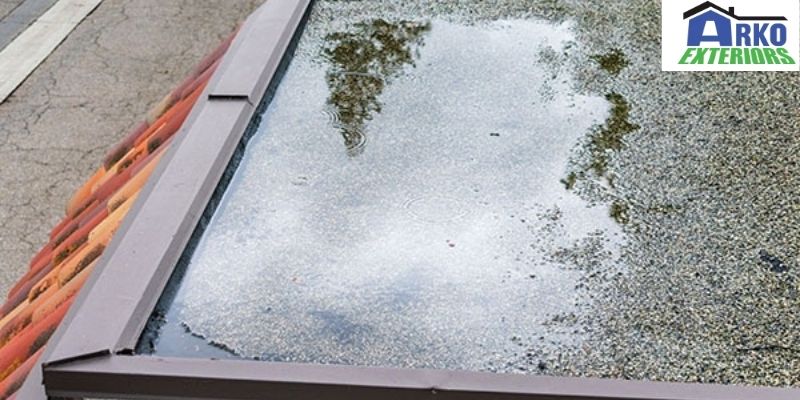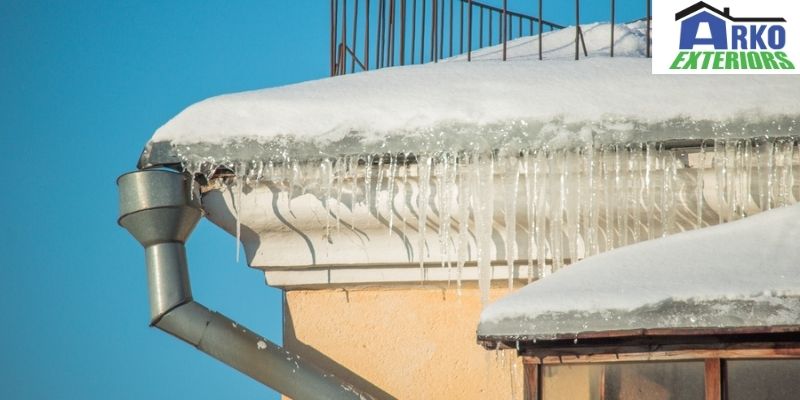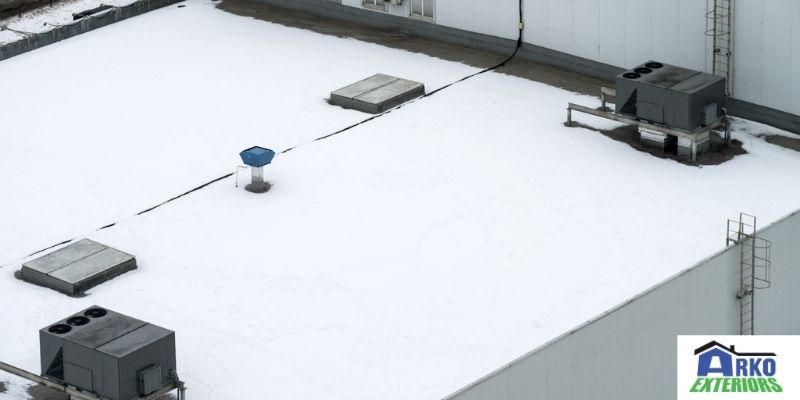The flat roof has been around for years and has been labeled contemporary as a design style. However, did you know that flat roofs aren’t really flat? They have very slight slopes so that water drains off of them.
Flat roofs, especially those located in high rainfall or snowfall regions, need a proper drainage system for the roof to function properly. As a result, there are effects that the winter months can have on your flat roof.
5 Effects That Winter Can Have On Your Flat Roof
The prolonged winter months can affect exterior surfaces. As a property owner or homeowner, you should be aware of the vulnerable areas of your flat roof and keep a close eye on them during the winter season. Here are some effects the winter can have on your flat roof.
1. Ponding and bowing

There is no way you can escape snowfall during the winter. The buildup of snow on the surface of flat roofing systems exerts a strain due to the extra weight. This pressure will cause the trusses and joists to buckle, leading to binding issues.
The pressure of water from the melting snow will increase once a low spot has developed. This will then affect secondary systems such as AC units and other electrical systems, disrupting their proper functioning for your house or building.
2. Freeze-thaw
Snow melts and can produce ponding. Melting water refreezes as it reaches the eaves of the roof. This results in ice formations, which are then pushed into crevices and fractures. This causes more leakage as the ice breaks in the liner of the roofing system. Freeze-thaw cycles produce additional damage to flat roofs as a result.
3. Leakages
Snowmelt and water can cause damage, including leakages that may happen due to loose binding. Leaks will develop once water sits on the low spots of a flat roofing system. You should not leave snow for too long on your roof. The load can trigger a roof collapse. Fortunately, this is preventable once you get rid of the load of snow on your flat roof.
4. Gutter problems

Water builds up on flat roofs when it is not properly drained off. This leads to a variety of problems with the gutter system. Stress is put on the gutters as they attempt to drain the water. This stress, as a result of ice buildup, prevents proper drainage. It puts unnecessary pressure on your gutters. The solution in some cases is for you to replace damaged pieces or remove portions of your flat roof to ensure adequate drainage of water.
5. Tears in the seams
The temperature during severe winter seasons is not stable– it fluctuates. This fluctuation causes moisture to enter a cycle of freezing and thawing; This cycle forces roof materials to contract and expand irregularly. The result of this is loose flashing, cracked caulking, and tears on your flat roof, particularly along the seams.
Conclusion
Water, ice, and snow from the winter season are hazardous to flat roofs. Moreover, flat roofs are prone to damage from fluctuating weather conditions. Keeping these elements away from your roof can be challenging, but must be done. With a little financial investment in proactive maintenance, you can keep the cost of repair on your flat roof low. Consult the roofing experts at Arko Exteriors. With years of experience and many successful roofing projects completed, they are trusted experts who can help you identify and prevent severe damages to your roof(s) due to harsh Minnesota winters.

